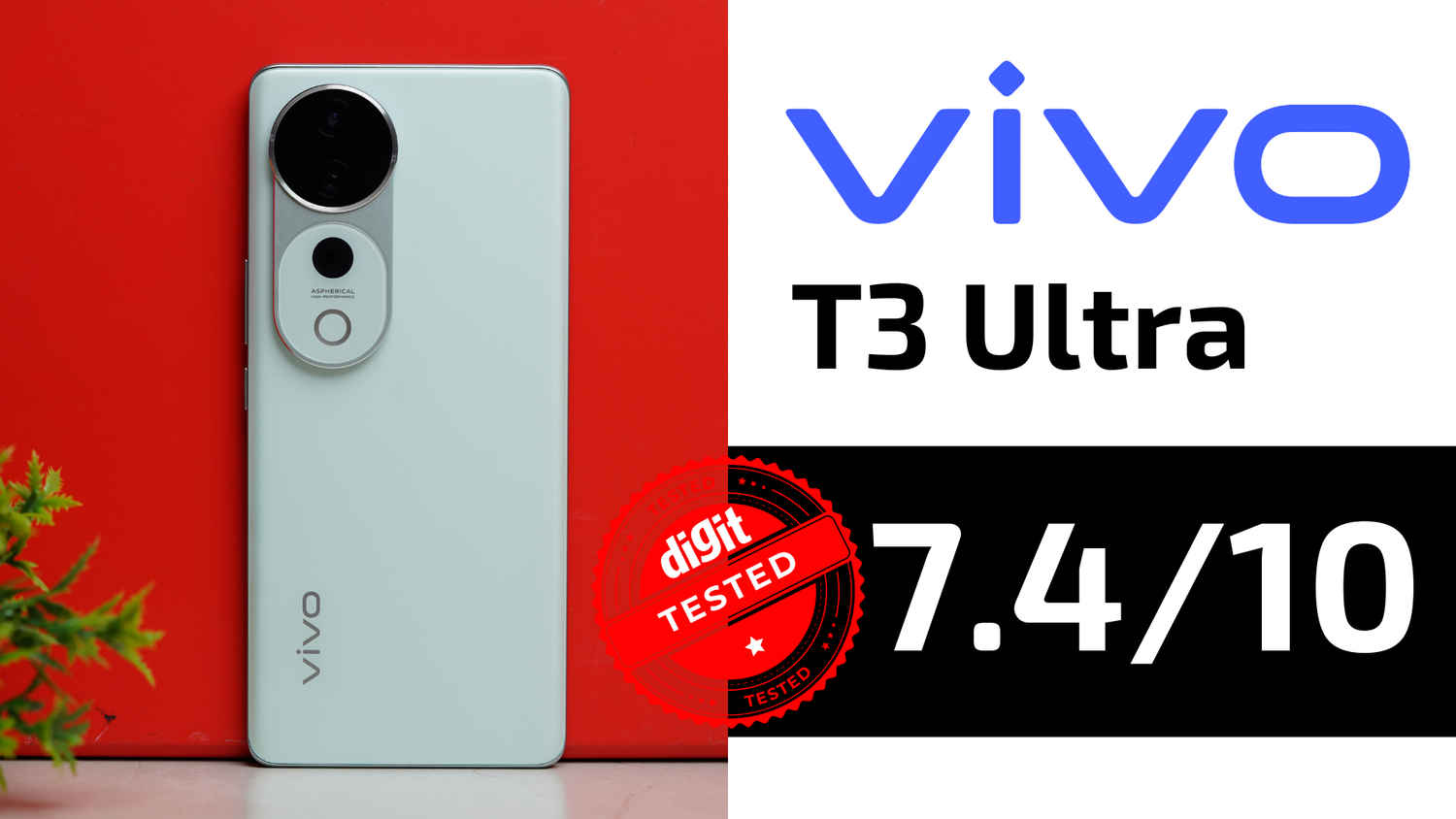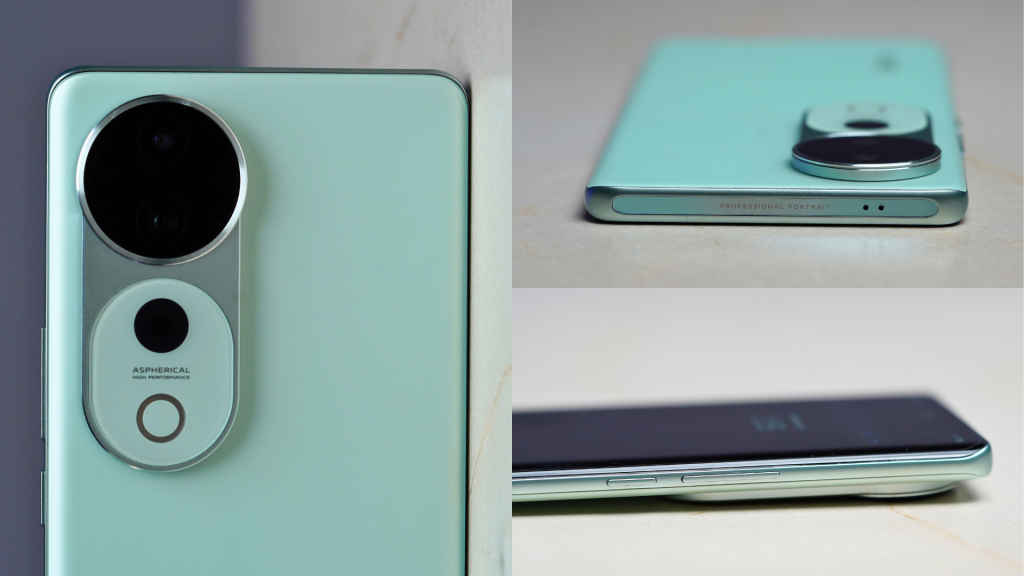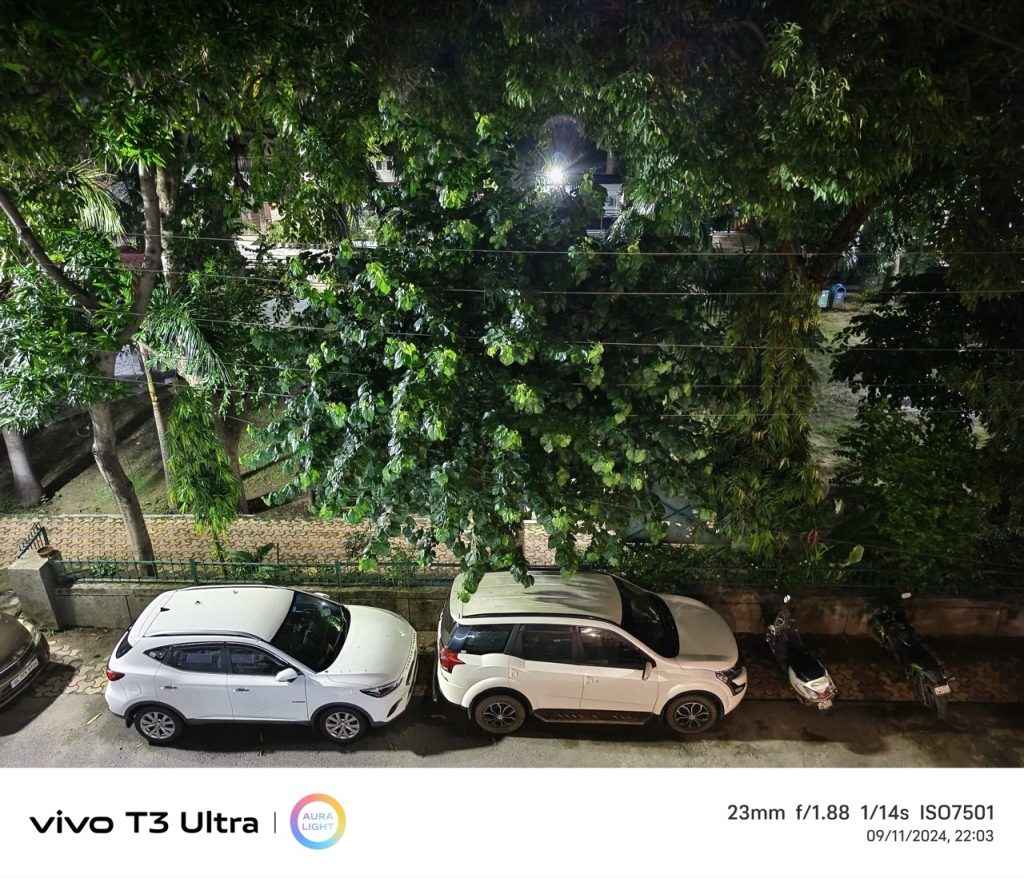Vivo T3 Ultra Review – Solid mid-ranger for everyone

- Great overall design
- Value for money package
- Excellent display for the price
- Performance drop and heating over long gaming sessions
Vivo has been on a roll after celebrating their 10-year anniversary last month when they launched their V40 series phones. After solidifying their position in the upper section of the mid-range, they moved to launch their T3 Ultra to capture the mid-range market. They retained the design of their more expensive phones and tried to make an overall value-for-money device which will give you the experience of owning a pricier phone without breaking the bank. I put the Vivo T3 Ultra through its paces, and here’s what I found out –
Vivo T3 Ultra carries the same design as the Vivo V40 series
Vivo has adopted the – What ain’t broke, don’t fix it – mantra with the design of the Vivo T3 Ultra. They debuted the design that we see on the T3 Ultra on their more expensive line of V series phones with the Vivo V40 Series. If you are familiar with the in-hand feel of those devices, you will feel right at home with the T3 Ultra.
At the back, you have a fairly prominent circular camera module with the Aura ring flashlight and the Flicker module baked into the pill-shaped module that extends down from the main camera module. We have the fairly simple Vivo branding on the back of the phone, and the “Professional Portrait” text appearing on the top rail of the phone. The in-hand feel of the device is amazing. With the tall aspect ratio, curved display, and rounded edges, it is fairly easy to hold and slide in and out of the pocket. In our testing, the phone came in at 196 grams, which is slightly on the higher side when compared to other offerings in the mid-range segment. However, the phone is fairly balanced overall, and you won’t experience a lot of strain when using it for long periods of time.

The main differentiating factor between the V series and the T series when it comes to the build and design of the phones is evident when it comes to the material used in the phone. On the V40 series devices, we get Gorilla glass protection on the back, while the T3 Ultra gets a plastic back, which has a matte finish to it, and with or without the cover, it is quite a looker. The plastic backing means that there is no wireless charging either. A missing feature, but not a deal breaker given the charging capabilities of the phone with the included power adapter. More on that later.
The side rails of the phone are made of polycarbonate material, which is also common in mid-range phones, and I honestly did not miss the metallic housing, which we see in more expensive devices during my time using the phone. The phone has two colour options – Forest Green and Lunar Grey. We got the Forest Green variant of the phone with 12 GB RAM and 256 GB storage for review. And the phone is quite a looker in the green colourway. It does not pick up a lot of fingerprints or scuffs when used without the cover.
All in all, the build and design of the Vivo T3 Ultra has a nice premium feel and finish to it, given its obvious resemblance to the more expensive V40 series. You get the worth of what you are paying for, and maybe a little extra when it comes to the overall feel and finish of the phone.
UI and Performance
In terms of the UI, the Vivo T3 Ultra is fairly decked out its share of modern smartphone essentials with a tiny sprinkling of AI features as well, which is nice to have. AI has been a buzzword floating around the tech world across categories, and Vivo did not miss out on boarding onto that train with the implementation of AI features on their latest phone. There are two prominent AI features that are limited to photography applications. They are – AI erase, and AI photo enhance. They work well for what it’s worth and earn the phone, the AI tag that brands are hunting for these days.

Vivo T3 Ultra comes out of the box with Funtouch OS 14, which is Vivo’s take on Android 14. During the setup process, you are presented with the option to download some apps that are bundled. You can skip that, and when you are on the phone, it will be relatively bloatware-free. There are two folders titled Hot Games and Hot Apps, which are bundles of recommended software that Vivo is pushing on. However, you can simply remove those two folders to get rid of a lot of clutter from the screen. As for the apps, which are there on the phone from the get-go, they are –
- Truecaller
- Snapchat
- Myntra
- Amazon
- Netflix
- PhonePe
I don’t mind having these pre-loaded on the phone. However, giving a cleaner slate for the users to start with makes the experience better overall.
Unlike many other phones in this and lower price brackets, Vivo has decided to keep the user experience free of advertisements, so that is a plus. I am someone who daily drives an iPhone, so switching to the Android side of things took me a day to get used to. But once I was back in the groove, it was smooth sailing throughout. As I mentioned earlier, a cleaner slate to begin with would be nice. Overall, Funtouch OS is nice to use and fairly easy to get used to.
Now, we come to the main part, the performance. The phone comes with Dimensity 9200+ SoC and has up to 12GB RAM and 256GB of storage onboard. To give you a quick and easy walkthrough the performance of the Vivo T3 Ultra when it comes to synthetic benchmark, I have prepped a table –
| Benchmark | Score | ||||
| Vivo T3 Ultra | realme 13 Pro + | realme 13 Pro + vs Vivo T3 Ultra | OnePlus Nord 4 | OnePlus Nord 4 vs Vivo T3 Ultra | |
| CPU Performance | |||||
| AnTuTu | 1443540 | 683699 | -759841 | 1178370 | -265170 |
| Geekbench Single Core | 1223 | 915 | -308 | 1166 | -57 |
| Geekbench Multi core | 3969 | 2798 | -1171 | 4077 | 108 |
| CPU Throttling Test (20 threads) | 87 | 72 | -15 | 77 | -10 |
| PCMark Work | 11176 | 12603 | 1427 | 11278 | 102 |
| GPU Performance | |||||
| 3D Mark Wild Life Extreme | 3805 | 800 | -3005 | 3076 | -729 |
| GFX Bench (Aztec Ruins, high tier) | 4326 | 1152 | -3174 | 3869 | -457 |
| GFX Bench (Car chase) | 4220 | 1458 | -2762 | 3555 | -665 |
| GFX Bench (Manhattan 3.1) | 6964 | 2938 | -4026 | 3729 | -3235 |
| Storage | |||||
| PCMark Sequential Read Speed | 1604 | 1604 | 0 | 2685 | 1081 |
| PCMark Sequential Write Speed | 1609 | 1438 | -171 | 1595 | -14 |
| PCMark Random Read Speed | 26 | 44 | 18 | 48 | 22 |
| PCMark Random Write Speed | 47 | 60 | 13 | 60 | 13 |
| Battery | |||||
| PC Mark Battery Life | 1037 | 1150 | 113 | 1018 | -19 |
As you can see, in synthetic benchmarks, the Vivo T3 Ultra trumped the realme 13 Pro+ comprehensively in terms of the CPU and GPU performance. In storage benchmarks, the realme 13 Pro+ raced ahead or matched the T3 Ultra expect in the PCMark Sequential Write Speed test. When compared to the OnePlus Nord 4, the Vivo T3 Ultra again showed its stronghold in GPU performance, but the competition was tight in CPU benchmarks. From what we can see in the numbers, the phone has slower storage than the Nord 4.
However, the real-life implications of these performance numbers are not as significant as they would seem to be. The phone works well, and in all the subjective criteria like ease of use, snappiness, and daily tasks, it scored really well. The phone is responsive and will handle whatever daily workload you send its way with ease. When I was gaming on the phone, it did heat up quite a bit when in a room with the AC set to 21 degrees Celsius without the cover on. However, when the ambient temperatures were lower, around 16 to 18 degrees Celsius, the phone’s heating was more manageable. In our CPU throttling test, the phone throttled down to 87 per cent of its peak performance, and I could see that being replicated when gaming and recording high-res footage.
Now, being an audio nerd primarily, I put the speakers and the microphone of this phone through its paces as well. The stereo speakers on the phone delivered ample loudness for content consumption in a quiet space, and the separation of audio between the two speakers was also on point for the most part. However, due to the positioning of the bottom speaker next to the charging port, the directions of the footsteps in games do go out of whack. But that is just a nitpick. The microphone performance of the phone in quiet environments is on point. In noisy environments, it holds its own.
Display is crisp and does well in most scenarios
The display on the Vivo T3 Ultra is fairly colour-accurate and will fare well for most people when it comes to content consumption. The phone comes with a 6.78″ 1.5K 120Hz curved AMOLED screen with 4,500 nits peak brightness and HDR10+ support. When put to the test, the phone recorded a peak brightness of 983 nits of peak brightness and 9 nits of dims. It is fairly bright for day-to-day use, and in bright sunlight, it is fairly legible. The text is crisp and the visuals also look great for the most part. It did struggle a bit in darker scenes, but in ideally lit ones, it was great!
For colour accuracy, here’s a quick look at how the phone fared in our testing –


Cameras – Vivo’s prowess shining through with the Vivo T3 Ultra
Coming to the cameras, the Vivo T3 Ultra packs a 50MP primary (Sony IMX921, OIS), 8MP ultrawide, and 50MP selfie (4K video recording) camera. The camera fared well for the most part in well-lit conditions but failed to capture the details that I would want it to in dimly lit conditions. Here’s how the phone fared across different conditions –
Ultrawide Camera, ultra-low light

The details are lost and there is a lot of smudging in areas where there should have been creases.
2x zoom, Primary Camera, ultra-low light

The details are retained well and the shimmer on the steps is actually indicative of what I could see with my naked eye. The colour reproduction, represented by the green backdrop under the stairs, is also on point for the most part.
1x zoom, Primary Camera, ultra-low light

The colour reproduction is on point, details are well retained and the overall lighting is also decent. A slightly lower shutter speed could do more justice to the actual lighting condition of the space.
Ultrawide Camera, low light

The detail retention is great as you can see in that of the leaves. The lines on the body of the cars and the reflections on their glasses are handled well.
1x zoom, Primary Camera, low light

The light shining through the leaves was challenging to handle but the phone compensated well. Quite a bit of details retained in the leaves and the cars.
2x zoom, Primary Camera, low light

The detail retention is similar to that of the 1x zoom shot, great! There was a bit of lens flare which I had to mitigate and it took a couple of attempts for the phone to get the shutter speed and ISO dialled in.
1x zoom, Primary Camera, well lit

The colours and details are very well captured by the phone. The bokeh is also nice with the edge detection able to handle the stay hair strands well.
2x zoom, Primary Camera, well lit

Details are well retained, but when you zoom in and look at some of the more intricate textures on the saris, the phone struggles to replicate them as one would want.
Ultrawide Camera, well lit

No fish-eye effect on the fringes of the image which is good. The colours and details are well retained by the phone but when you zoom in, you can see it struggling with some textures.
Portraits

The edge detection is not what I was expecting, but the details on subject’s face are well retained and it does well overall.
Selfie, low light

Detail retention is nice and the extra light added by the phone’s screen helps with the shot a lot. The skin tones are also well reproduced.
Selfie, well lit

There is not a lot of smoothening, the colours are well reproduced, and the overall image looks crisp and sharp.
When it comes to video, the stabilisation surprised me. In terms of colour and detail, you can expect similar performance to that of the phone’s primary camera in well-lit conditions.
Battery life
The Vivo T3 Ultra comes with a 5,500 mAh battery with 80W wired charging support. In our battery tests, here’s how the phone fared –

The phone should suffice you for a day with ease with medium usage, with some charge left before you plug it in when you are sleeping for the night. There’s no wireless charging, which is something I would have really appreciated on the phone.
Vivo T3 Ultra Price and Availability
The T3 Ultra 5G will be available in two colours – Frost Green and Lunar Gray and will be priced at INR 31999 (inclusive of all taxes) for the 8GB + 128GB variant, Rs. 33,999 (inclusive of all taxes) for the 8GB + 256GB variant, and Rs. 35,999 (inclusive of all taxes) for the 12GB + 256GB variant. The sale of the phone will go live on September 19, 7PM.
Should you buy the Vivo T3 Ultra?
The Vivo T3 Ultra makes for a great device overall, providing value for the money that you spend on it. The design is premium, and the phone has a great in-hand feel. It performs better than other similarly priced devices in synthetic benchmarks and holds its own in the camera department as well. The night photography of the phone could have been better, and the ultrawide camera pales when tasked with capturing complex textures. The battery life of the phone is also decent and it makes for a great device overall for what it’s worth. If you are willing to take the plunge right at launch, you will not be disappointed to have the phone as your daily driver.
Vivo T3 Ultra Key Specs, Price and Launch Date
| Release Date: | 25 Nov, 2024 |
| Market Status: | Launched |
Key Specifications
Storage
256 GB
Battery capacity (mAh)
5500
Rear Camera Megapixel
50 + 8
Screen size (in inches)
6.78
Satvik Pandey
Satvik Pandey, is a self-professed Steve Jobs (not Apple) fanboy, a science & tech writer, and a sports addict. At Digit, he works as a Deputy Features Editor, and manages the daily functioning of the magazine. He also reviews audio-products (speakers, headphones, soundbars, etc.), smartwatches, projectors, and everything else that he can get his hands on. A media and communications graduate, Satvik is also an avid shutterbug, and when he's not working or gaming, he can be found fiddling with any camera he can get his hands on and helping produce videos – which means he spends an awful amount of time in our studio. His game of choice is Counter-Strike, and he's still attempting to turn pro. He can talk your ear off about the game, and we'd strongly advise you to steer clear of the topic unless you too are a CS junkie. View Full Profile

